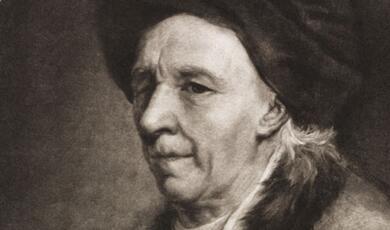More complex than Graunt could imagine: Theoretical and practical thoughts about tempo effects in the conventional period life table
Share
- Details
- Text
- Audio
- Downloads
- Extra Reading
Download Text
29 November 2012 More Complex than Graunt could Imagine: Theoretical and Practical Thoughts about Tempo Effects in the Conventional Period Life Table Dr Marc Luy Note: this transcript is a combination of two already published papers by the author. Please do not cite or quote this manuscript but refer to the original publications (see footnote 1 below) 1. What is the tempo distortion of period life expectancy? In the logic of Bongaarts and Feeney (BF), the term “tempo effect” describes a change of period rates for demographic events (births, deaths, marriages, etc.) that results exclusively from a change of the average age at which the event occurs during the observation period (Bongaarts and Feeney 1998; Bongaarts and Feeney 2002). A tempo effect works such that an increase of the average age at occurrence leads to a decrease of period rates, and a decrease of the average age leads to an increase of period rates. Since demographic period rates are calculated with the aim to measure the quantum of the analyzed event during the observation period in the sense of “current conditions” (i.e. the quantity of events in a specific year or period according to the demographic behaviour or experiences of the currently living individuals), tempo effects have to be seen as undesired distortions. Consequently, this holds equally for all demographic indicators derived from period rates, like the period total fertility rate (PTFR) or period life expectancy (PLE). The basic intention of BF can be summarized as follows: In order to fulfil the central aim of demographic period indicators (i.e. the representation of demographic conditions prevailing in the current year or period of years), a standardization of age alone is not sufficient since also tempo effects cause distortions in period indicators. Therefore, period indicators should be standardized (adjusted) for tempo effects as well. The justification for tempo adjustment is rooted in certain paradoxes that might arise between demographic experiences of the real living population and those of a hypothetical population whose characteristics are based on conventional period rates. Such paradoxes have been demonstrated with very simple simulation models by Bongaarts and Feeney (1998) for the case of fertility and Bongaarts and Feeney (2002) for the case of mortality. The theoretical examples presented in these papers reveal that changing mean ages at which the demographic events occur can cause misleading information from period rates. For instance, it is possible that period fertility rates decline although fertility remains unchanged among all cohorts (Bongaarts and Feeney 1998) or that period mortality rates increase although all cohorts experienced only decreasing or stagnating mortality (Bongaarts and Feeney 2002). Luy (2008, 2009) extended these models for demonstrating tempo effects in period mortality by comparing two populations with different levels of mortality and different levels of mortality changes. He showed that it is possible that a population in which each cohort has higher mortality than the corresponding cohorts of another population can have lower period mortality rates when tempo effects are not adjusted for. Luy and Wegner (2009) further elaborated this example and showed that such a situation can occur even with total LE, i.e. that a population has a higher PLE than another population although the cohort life expectancy (CLE) of each cohort living in this period is lower in the population with higher PLE. Luy (2008, 2009) and Luy and Wegner (2009) argued that such paradoxes contradict the main aim of period indicators which is to reflect current demographic conditions. The results of their simulations raise the following questions in favour of tempo-adjusted period indicators: Do we really want that PLE can indicate a lower mortality in a population in which each member dies earlier than in another population with lower PLE? Moreover, does anyone who uses period indicators for demographic conditions or processes and interprets corresponding differences and trends takes into account that such a paradoxical situation might occur? The possibility of contradictory results regarding differences in demographic conditions between populations in period and cohort perspective has also another very important consequence for the typical analysis of demographic events. When we find differences in period conditions between populations (like a lower PLE) we are usually trying to find the causes for these differences. Therefore, demographers (and scholars from other related disciplines) who want to explain such differences analyze the differences between the studied populations with respect to the factors that are assumed to influence the level of fertility or mortality (or other demographic processes). However, such factors apply only to the real population and not to a hypothetical period population. Since the real population living at a certain time consists of the members of different cohorts, the possibility that period conditions and trends can contradict the corresponding conditions and trends in the cohorts might cause severe problems for the analyzed cause-effects-chain. Luy (2006) assumes such period distortions caused by tempo effects to be the reason why the trends in mortality differences between eastern and western Germany are still largely unexplained (see section 3). Everyone who is aware of the specific features of period indicators is also aware of the fact that period indicators can differ from corresponding cohort indicators. For example, current PLE can (and probably will) be very different from the CLE of the currently newborns. However, the analysis of period indicators can only be meaningful when they reflect the demographic experiences of the real population. The demographic conditions of cohorts must therefore be reflected by the combined period conditions of all years in which a cohort experienced the demographic events. These explanations might help to understand the basic intention behind BF’s tempo approach. Tempo adjustment, i.e. the standardization of period indicators for age and tempo effects, is supposed to provide period indicators which allow a less distorted comparison of period conditions between populations or times, and are closer to the average experience of real cohorts than conventional period indicators. Because of (1), tempo-adjusted period measures are supposed to be better indicators for the demographic conditions prevailing in a specific year or period of years. Nevertheless, also tempo-adjusted measures are pure period indicators which refer to hypothetical cohorts as do conventional period indicators. Equivalently to what has been stated above for conventional period indicators, real cohorts will also not experience a given set tempo-adjusted period rates during their lives. However, because of (2), the usual interpretations of period indicators, like “average number of further life years”, are better fitting to tempo-adjusted indicators than to conventional ones. The natural relation between period conditions and cohort experiences and BF’s intention to provide period indicators that are closer to the average experience of real cohorts than conventional period indicators caused several misunderstandings regarding the nature of tempo adjustment. Therefore it is helpful to separate tempo-adjusted period indicators from other demographic measures which also connect period and cohort dimension. 2. Classifying the tempo approach between period and cohort analysis Demographers are well acquainted with the basic demographic concepts of period and cohort analysis. There are several approaches that combine these two dimensions to produce demographic indices. Also tempo-adjusted period indicators include some – but very minor – cohort components as do other measures that combine the period and cohort dimension. In order to understand the basic idea behind the tempo approach and how it distinguishes from the other approaches it is necessary to separate between three methodological combinations of period and cohort analysis: Translation measures, Cross-sectional cohort averages, Tempo-adjusted measures. Translation measures aim to translate period indicators into cohort indicators and vice versa (see Fig. 1). Examples for translation measures are the approaches of Ryder (1964) or Zeng and Land (2002) for fertility analysis and the approaches of Schoen and Canudas-Romo (2005) as well as of Goldstein and Wachter (2006) for the analysis of mortality. The main characteristic of translation measures is that the outcomes are either cohort estimates derived from period rates or indicators, or period estimates derived from cohort rates or indicators. One translation approach in the direction from cohorts to periods results in the so-called “lagged cohort indices” like the “lagged cohort life expectancy” (LCLE). The idea of lagged cohort indices is to use a cohort estimate, e.g. CLE, as indicator for the demographic conditions in the period in which a cohort realized the demographic event on average. For instance, the CLE of a specific cohort can be used to characterize the mortality conditions of the calendar year that results from the birth year of the cohort plus the average life expectancy of its members (i.e. the calendar year in which the members of the cohort died on average). The main feature of cross-sectional cohort averages is that they produce a cross-sectional average of the demographic experiences of all cohorts living in a specific period. The concept of cross-sectional cohort averages is illustrated in Figure 2 where the thick cohort arrows indicate that the complete lifetime experiences of all cohorts living in the light-grey shaded period are considered. In the field of fertility analysis, a cross-sectional cohort average is the “average completed fertility” (ACF) proposed by Ward and Butz (1980). Cross-sectional cohort averages do also exist for the analysis of mortality, like the “total mortality rate” (TMR) as introduced by Sardon (1993, 1994). As described by Guillot (2006: 4), “in a cohort (real or synthetic), the TMR is the number of lifetime deaths divided by the initial size of the cohort. In a life table with a radix of one, the TMR can be calculated by adding all age-specific life table deaths. Obviously, the TMR in a cohort, real or synthetic, is invariably one.” However, the TMR can also be calculated cross-sectional for a specific period. Therefore it is necessary to determine for each cohort alive in the observation period the proportion of deaths occurring during that period (adjusted for all migrations until the observation period), and by summing these proportions across all cohorts (for more details, see Guillot 2006). The TMR reflects the degree of completeness of the cross-sectional sum of cohort events and equals 1.0 when mortality remains unchanged. As soon as some or all currently living cohorts experience a change in mortality conditions, the TMR leaves unity and becomes higher than 1.0 in the case of increasing mortality and lower than 1.0 in the case of decreasing mortality (see also Luy and Wegner 2009). According to our classification of indices, another cross-sectional cohort average for period mortality is the “cross-sectional average length of life” (CAL) as introduced by Brouard (1986) and Guillot (2003). CAL is the cross-sectional sum of the cohort-specific probabilities of surviving from birth to the age that the cohorts reach in the observation period (see also Guillot and Kim 2011). Since in the case of mortality the cohort quantum is always 1.0, timing-adjusted measures like the TMR and CAL can be calculated even for the current calendar year. Cross-sectional averages have the property that they reflect directly the occurrence of tempo effects in a specific period. Thus, the idea of cross-sectional averages is closely related to BF’s idea of tempo adjustment. The difference to tempo-adjusted measures is, however, that timing-adjusted measures are based on complete cohort experiences that are averaged for all events occurring in a specific period. As outlined in the previous section, tempo effects are solely based on the changes of the mean age of event occurrence during the observation period. The cohorts’ demographic experiences outside the observation time do not matter in the logic of BF’s tempo approach – at least theoretically – as illustrated in Figure 3. Tempo adjustment of period indices like the PLE is performed on the basis of the annual change in the average age at death in the observation period only. Thus, tempo-adjusted measures are pure period indicators which adjust period quantum for period tempo (with period tempo being defined as the period-specific change in the timing of cohorts). Consequently, tempo-adjusted measures have to be separated conceptually from cross-sectional averages. 3. An empirical example: differences in life expectancy between eastern and western Germany Figure 4 shows the trends in conventional and tempo-adjusted life expectancy at birth (no mortality under age 30 in both cases) from 1975 to 2004 for West and East German females and males. Western German females represent the only of the four populations analyzed with an observed LE that has been increasing almost constantly since 1950. Thus, the tempo distortion S(t) (defined as the difference between conventional LE and tempo-adjusted LE*) is relatively constant among West German females during the observation period. Since improvements in LE developed later (West and East German males) or at a changing pace (East German females) among the other three populations, tempo distortions must vary when compared to West German females. This is well reflected by the results gained for tempo-adjusted LE* [e0*(t)] and S(t), as can be seen in Figure 4. In all cases, the estimated tempo distortions agree with the logic of mortality tempo effects. The tempo distortion S(t) was very low among West German men in 1975 and then increased steadily until the second half of the 1980s, when the difference between conventional LE and tempo-adjusted LE* reached an almost constant level (Figure 4a). LE among West German men remained more or less unchanged between 1950 and 1970, thus one cannot expect a noticeable tempo distortion in the mid-1970s. Rising LE after 1970 is caused a by shift in the average age at death and thus the tempo-adjusted LE* also starts to increase, although at a lower pace than does conventional LE. Among East German males, LE remained constant or even declined slightly until the end of the 1980s and then started to rise at a higher pace than in any phase of LE trends in West Germany. Consequently, tempo-adjusted LE* [e0*(t)] did not differ from conventional LE until the beginning of the 1990s and then began to increase at a considerably lower rate compared to e0(t). The extent of tempo distortions in conventional LE grew during the observed period among East German females, too. Their LE rose in the period preceding unification, although it did so at a lower pace than among their West German counterparts. As a result, tempo distortions, i.e. the difference between tempo-adjusted LE* and conventional LE, remained at an almost constant level between 1975 and 1990. However, the difference between e0(t) and e0*(t) started to increase at the end of the 1980s when conventional LE rose at a higher rate – a phenomenon similar to what has been observed among men in the eastern part of Germany (Figures 4b and 4d). The most important question is the way in which the differences in LE between West and East Germany developed in the observation period 1975 to 2004 when adjusted for tempo distortions. The corresponding results are given in Figures 5 and 6 for males and females respectively. The thinner lines in the two graphs represent the absolute difference between West and East Germany in conventional LE and the bold lines show the difference in tempo-adjusted LE*. Figure 4 again depicts the rapid decrease in conventional LE differences after 1990, following a continuous increase since the beginning of the observation period. Whereas West German males enjoyed a higher LE according to conventional calculation methods since 1976, East German men showed a higher tempo-adjusted LE* until 1981. Only after 1981 did the differences in tempo-adjusted LE* switch to an advantage for West German males, although much less so than the results based on conventional LE. The graph demonstrates that the trend in increasing west-east differences occurred at a lower pace once LE is adjusted for tempo effects. In 1990, when the difference in conventional LE between West and East German men reached a peak of 3.08 years, the difference in tempo-adjusted LE* was only 1.07 years, i.e. two years less. The finding that the latter differences did not decrease since unification but continued to increase until the end of the 1990s is even more interesting. While the difference in conventional LE between western and eastern German males declined to roughly one and a half years in 2004, those in tempo-adjusted LE* are now even higher, with a difference of about 1.6 years. Only at the end of the 1990s did the trend in increasing differences in tempo-adjusted LE* lower in speed, pointing to slow convergence solely in the last years of the observation period. The results for the west-east German differences among females are similar to those just described for males. Until unification, the advantage in mortality conditions of West German females is lower when tempo-adjusted LE* is used instead of conventional LE. Since among females the trends in conventional LE in the two pre-unification Germanys were not as different as that of their male counterparts, the relative trends of increasing west-east differences in conventional LE and tempo-adjusted LE* are more similar compared to the differences between West and East German males, i.e. the tempo distortions in the measured trend are less marked. However, results according to conventional LE [e0(t)] and tempo-adjusted LE* [e0*(t)] differ significantly among women, too. Whereas the difference in conventional LE increased to 2.85 years in 1988, those in tempo-adjusted LE* did never exceed 1.9 years. Similar to the situation among men, the differences in tempo-adjusted LE* between West and East German females did not decline with unification parallel to conventional LE but instead rose until the mid-1990s. The trends in conventional LE and tempo-adjusted LE* crossed over between 1992 and 1993. From then on, the mortality advantage of West German females measured with tempo-adjusted LE* is higher when compared to the results based on tempo-unadjusted values. Although a decreasing trend in mortality differences between western and eastern German females is also evident with tempo-adjusted LE* since the mid-1990s, the remaining differences in favor of western German women are still considerably higher. While the disadvantage of eastern German women decreased to 0.28 years in the year 2004 according to conventional LE, the tempo-adjusted difference still shows 1.1 years. These empirical results are striking and may be important for the general understanding of several phenomena connected with changing mortality: once LE is adjusted for tempo effects to LE*, the differences between western and eastern Germany do not decrease immediately after unification and ten years later they still are higher when compared to the differences in conventional LE. Taking into consideration what we know about mortality trends and their driving factors, the following question arises: Which of the two stories describes better what we can expect the mortality differences between western and eastern Germany to look like? We know that mortality differences such as these are caused by a number of different factors that cannot be separated empirically and that may work in opposite directions. This group of factors certainly includes some long-term effects on the mortality conditions of a population, such as the health consequences of environmental conditions or uranium mining and storage, or other long-term effects that are still working against LE improvements in eastern Germany, such as of the continuing immigration of a more healthy foreign population to western Germany or selective internal east-west migration. But also the factors that are able to cause sudden changes in mortality conditions will possibly take at least a few years to display their maximum effects. For instance, qualitative improvements in medical technology cannot be reached within the short span of a year, and even if eastern German’s lifestyles changed immediately after 1990, the impact on health and mortality possibly develops slowly and steadily. Consequently, following more than two decades of continuous divergence, it seems unlikely that mortality improvements in eastern Germany reach beyond the improvements made in West Germany already in the first year after unification. From this point of view, the picture drawn by tempo-adjusted LE* fits better than that painted by conventional LE the expected trends and to the fact that the disadvantages in self-reported health – known to be a good predictor of mortality conditions – of eastern German women and men decreased only slightly during the 1990s (see Luy 2004, 2005). Thus, tempo-adjusted LE* seems to be a more realistic indicator of the level and changes in current mortality conditions of the real people than conventional LE. 4. Discussion To understand BF’s tempo approach correctly it is first important to realize that tempo-adjusted period indicators are by no means cohort but pure period measures to describe current demographic conditions. The conventional period indicators like the PTFR and PLE standardize for age as the only structural component. However, also a changing mean age at which the demographic events occur causes additional structural effects that influence the quantitative outcome of the conventional period indicators. The main aim of tempo adjustment is to produce indicators that are free of the mix of quantum and tempo effects and estimate the tempo effect-free characteristics of demographic experiences. This tempo-quantum mix is evident in all kinds of demographic events and thus in all kinds of corresponding demographic event rates, including rates of fertility, mortality and other demographic processes. The indicators proposed by BF simulate a period situation in the absence of changing conditions which lead to changes in the age at occurrence. Conditions affecting mortality are, among others, the availability and use of immunizations and other public health practices, the availability of medical devices, screening programs for early detection of different kinds of cancers, drugs that prolong life by reducing the incidence of particular life-threatening diseases, surgical procedures and behavioural changes that improve health and prolong life (see Bongaarts and Feeney 2010: 7). Thus, changing conditions are the normality in human populations and this is why BF’s tempo approach is relevant for everyone who is interested in the levels and trends of demographic processes in the period perspective. The difference between conventional and tempo-adjusted period indicators is the theoretical model behind the hypothetical cohort that is constructed to represent the current demographic conditions. The decisive question for anyone interested in or using demographic indicators is which model is more appropriate, or in other words: conventional period indicators based on current demographic event rates versus tempo-adjusted period indicators based on BF’s idea of unchanging conditions – which tells us more? This question can only be answered on the basis of the purpose for which one uses a demographic period indicator. Since, as we have indicated, all period measures are hypothetical by their very nature, it is not possible to conclude that one model is correct and the other is incorrect. But it is possible to think about what consequences the models have for the parameter calculated and if these consequences meet the purpose of its use. In most cases, the goal of period analysis is the representation of current demographic conditions with the aims to study time trends and to compare different populations. The paradoxes that might occur between demographic experiences of the real living population and those of a hypothetical population whose characteristics are based on conventional period rates support the use of tempo-adjusted indicators for these purposes, at least in addition to the conventional period indicators. Conventional rates do not reflect real conditions that occurred in a population in years of changing conditions. Tempo-adjusted rates do, at least they do better. Timing-adjusted measures also reflect the real conditions, however, derived from the cohort perspective. It is important to note that the existing methods for tempo-adjustment are only approximations of the basic approach of BF and that they are imperfect solutions in cases where the basic statistical assumptions behind the methods are not fulfilled. BF themselves wrote just recently: “Tempo effects can be measured, and appropriate corrections can be made, only by imposing simplifying assumptions. The most important of these in our analysis is that there are no cohort effects, i.e. all cohorts respond to changing period conditions in the same way. We have argued elsewhere that this assumption holds approximately for fertility and adult mortality in many contemporary populations. When this simplifying assumption does not hold, the [tempo-adjusted indicator] is affected by distortions other than tempo effects, e.g. a changing parity distribution in the case of fertility. In such cases tempo effects still exist, but the measurement of quantum and tempo becomes difficult. The conventional BF method for estimating tempo effects is then not accurate and it does not address these other distortions. Further methodological research is needed to develop general methods for estimating period quantum and tempo” (Bongaarts and Feeney 2010: pp. 9-10). When understood properly, the tempo approach is straightforward and tempo-adjusted indicators like LE*can be interpreted as “the LE that would have been observed in year t if the age pattern of mortality had been the same as in year t-1, under the assumption that the shape (although not the location) of the age-specific death rates is equal in both years” (adopted and adjusted from van Imhoff 2001: 31). Thus, tempo-adjusted indicators are based on the theoretical quantum of demographic events that would have occurred, if conditions and thus the average age of occurrence did not change during the year of observation. In the most practical uses of demographic period indices, these criteria for standardization create indicators with useful information for its purpose. Conventional period indicators are simpler, but this simplicity holds the risk that important structural effects which are not standardized for distort the information one wants to get. 350 years after John Graunt’s first illustration of a population’s mortality in the form of a life table we are still exploring new challenges when using this oldest demographic instrument. References Bongaarts, John and Griffith Feeney. 1998. On the quantum and tempo of fertility, Population and Development Review 24(2): 271-291. ----------. 2002. How long do we live?, Population and Development Review 28(1): 13-29. Bongaarts, John and Griffith Feeney. 2010. When is a tempo effect a tempo distortion?, Genus 66(2): 1-15. Brouard, Nicolas. 1986. Structure et dynamique des populations. La pyramide des années à vivre, aspects nationaux et examples régionaux, Espaces, Populations, Sociétés 2(14-15): 157-168. Goldstein, Joshua R. and Kenneth H. Wachter. 2006. Relationships between period and cohort life expectancy: gaps and lags, Population Studies 60(3): 257-269. Guillot, Michel. 2003. The cross-sectional average length of life (CAL): a cross-sectional mortality measure that reflects the experience of cohorts, Population Studies 57(1): 41-54. ----------. 2006. Tempo effects in mortality: an appraisal, Demographic Research 14(1): 1-26. Guillot, Michel and Hyun S. Kim. 2011. On the correspondence between CAL and lagged cohort life expectancy, Demographic Research 24(25): 611-632. Luy, Marc. 2004. Mortality differences between western and eastern Germany before and after reunification. A macro and micro level analysis of developments and responsible factors, Genus 60(3-4): 99-141. ----------. 2005. West-Ost-Unterschiede in der Sterblichkeit unter besonderer Berücksichtigung des Einflusses von Lebensstil und Lebensqualität, in Karla Gärtner, Evelyn Grünheid, and Marc Luy (eds.), Lebensstile, Lebensphasen, Lebensqualität. Interdisziplinäre Analysen von Gesundheit und Sterblichkeit aus dem Lebenserwartungssurvey des BiB. Wiesbaden: VS Verlag für Sozialwissenschaften, pp. 333-364. ----------. 2006. Mortality tempo-adjustment: an empirical application, Demographic Research 15(21): 561-590. ----------. 2008. Mortality tempo-adjustment: theoretical considerations and an empirical application, in Elisabetta Barbi, John Bongaarts, and James W. Vaupel (eds.), How long do we live? Demographic models and reflections on tempo effects. Leipzig: Springer, pp. 203-233. ----------. 2009. Der Einfluss von Tempo-Effekten auf die ost-west-deutschen Unterschiede in der Lebenserwartung, in Insa Cassens, Marc Luy, and Rembrandt D. Scholz (eds.), Die Bevölkerung in Ost- und Westdeutschland. Demografische, gesellschaftliche und wirtschaftliche Entwicklungen seit der Wende. Wiesbaden: VS-Verlag für Sozialwissenschaften, pp. 140-168. Luy, Marc. 2010. Tempo effects and their relevance in demographic analysis, Comparative Population Studies - Zeitschrift Für Bevölkerungswissenschaft 35(3): 415-446. Luy, Marc and Christian Wegner. 2009. Conventional versus tempo-adjusted life expectancy - which is the more appropriate measure for period mortality?, Genus 65(2): 1-28. Ryder, Norman B. 1964. The process of demographic translation, Demography 1(1): 74-82. Sardon, Jean-Paul. 1993. Un indicateur conjoncturel de mortalité: l'exemple de la France, Population (French Edition) 48(2): 347-368. Sardon, Jean-Paul. 1994. A period measure of mortality. The example of France, Population: An English Selection 6: 131-150. Schoen, Robert and Vladimir Canudas-Romo. 2005. Changing mortality and average cohort life expectancy, Demographic Research 13(5): 117-142. van Imhoff, Evert. 2001. On the impossibility of inferring cohort fertility measures from period fertility measures, Demographic Research 5(2): 23-64. Ward, Michael P. and William P. Butz. 1980. Completed fertility and its timing, Journal of Political Economy 88(5): 917-940. Zeng, Yi and Kenneth C. Land. 2002. Adjusting period tempo changes with an extension of Ryder´s basic translation equation, Demography 39(2): 269-285.
© Dr Marc Luy 2012
This event was on Thu, 29 Nov 2012
Support Gresham
Gresham College has offered an outstanding education to the public free of charge for over 400 years. Today, Gresham College plays an important role in fostering a love of learning and a greater understanding of ourselves and the world around us. Your donation will help to widen our reach and to broaden our audience, allowing more people to benefit from a high-quality education from some of the brightest minds.


 Login
Login







